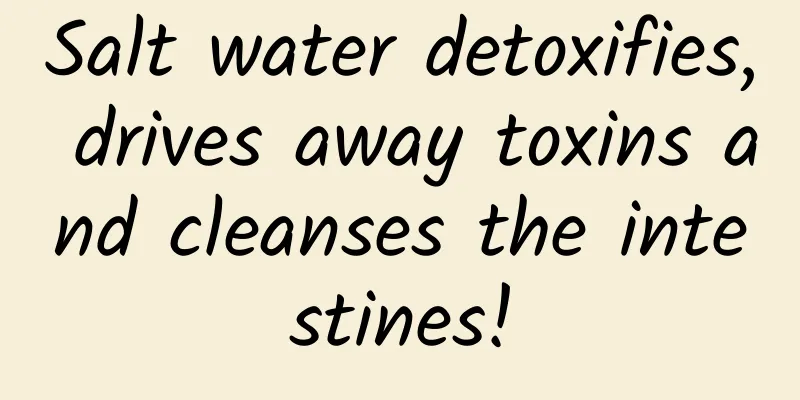What is the antidote for benzene poisoning?

|
There is no good antidote for benzene poisoning, but benzene poisoning is completely preventable. Benzene poisoning is divided into acute poisoning and chronic poisoning. When symptoms of benzene poisoning appear, the person should be taken out of the polluted environment and contaminated clothing should be changed, and toxic gases should be exhaled as much as possible. The specific treatment should be determined according to the patient's own condition. 1. Acute poisoning (1) Nervous system: Headache, dizziness, tinnitus, diplopia, unsteady gait, feeling of being drunk, drowsiness; severe cases may have convulsions, coma, paralysis of the respiratory center, delirium, hallucinations, and cerebral edema. A small number of patients may have peripheral nerve damage; further development may lead to increased confusion and a state of light coma, in which the patient becomes unresponsive to calls; and continued inhalation of high concentrations of benzene may lead to a deep coma. In severe cases, breathing and cardiac arrest may occur. The course of the disease depends on the concentration of benzene in the air, which can last from minutes to hours. Active rescue before cardiac arrest can restore the patient's condition within minutes to hours. If a deep coma occurs, people who inhale high concentrations may die like lightning. (2) Respiratory system: It is seen in inhalation poisoning, with symptoms such as coughing, shortness of breath, and chest tightness. In severe cases, the symptoms may last for a long time, or when the breathing is weak, hypoxic pulmonary edema may occur, which may be accompanied by eye irritation symptoms. (3) Circulatory system: Flushed face, palpitations, and low blood pressure. Shock, myocarditis, various arrhythmias, and even ventricular fibrillation may occur. The electrocardiogram showed first to second degree atrioventricular block. (4) Digestive system: Nausea, vomiting, abdominal pain. Symptoms are more severe in patients taking oral medications. Occasionally, hepatomegaly and elevated aminotransferase levels may occur. Acute poisoning mainly causes toxic anesthesia, a process similar to general anesthesia during drunkenness or surgery. 2. Chronic poisoning In addition to the nervous system, it also affects the hematopoietic system. Common manifestations of the nervous system are neurasthenia and autonomic dysfunction syndrome; some patients may have sensory disturbances in the extremities, pain, decreased sense of touch, numbness, and may also develop multiple neuritis. The manifestation of hematopoietic system damage is the main feature of chronic benzene poisoning, with a decrease in white blood cell count and platelet count being the most common. Toxic granules and vacuoles may appear in neutrophils, and a significant decrease in granulocyte count may lead to repeated infections. A decrease in platelet count may lead to a tendency for skin and mucous membrane bleeding and menorrhagia in women. In severe cases, pancytopenia and aplastic anemia may occur. Some patients may have an eosinophilia or mild hemolysis. Benzene can also cause myelodysplastic syndrome. Leukemia caused by benzene exposure is increasing. Benzene-induced leukemia usually occurs after long-term exposure to high concentrations, with the shortest being 6 months and the longest being 23 years. Leukemia is mainly acute myeloid leukemia, followed by acute lymphocytic leukemia and erythroleukemia, while chronic myeloid leukemia is rare. treat 1. Acute poisoning The most important rescue measure for acute inhalation poisoning is to remove the patient from the poisoning site as soon as possible, move him to fresh air, take off contaminated clothes, wash the skin with warm soapy water, and keep warm. For conscious patients, ask them to exhale deeply so that benzene can be expelled rapidly and in large quantities through the exhaled air, and the symptoms will gradually disappear. For comatose patients, their airway should be kept open and they should be assisted to increase their breathing intensity. As long as the patient has a heartbeat, he or she can usually be saved. If the heart stops beating or breathing stops, cardiopulmonary resuscitation should be performed first. If hypoxemia occurs, emergency endotracheal intubation and ventilator-assisted breathing are required. During cardiopulmonary resuscitation, if cardiac arrest occurs, do not inject epinephrine because it may induce ventricular fibrillation. Sedatives may be used if convulsions or muscle spasms occur. Irritability can be treated with intramuscular injection of promethazine. Convulsions can be treated with intramuscular injection of phenobarbital or enema of 10% chloral hydrate plus warm water. Protect the airway and prevent aspiration of vomitus. For patients in coma for a long time, monitor blood oxygen partial pressure, serum electrolytes and peripheral blood to prevent complications. Comatose patients should actively prevent and treat cerebral edema. 50% glucose or 20% mannitol can be injected intravenously 2 to 3 times a day. For patients in shock, vasoactive drugs can be used appropriately to maintain blood pressure on the basis of replenishing blood volume. Eye burns should be rinsed thoroughly with warm water and treated with norfloxacin eye drops and cortisone eye drops. For patients with leukopenia, shark liver alcohol, vitamin B4 and inosine can be used. For those who take the medicine orally, induce vomiting and perform gastric lavage as soon as possible. There is currently no specific antidote for benzene poisoning, and hemodialysis is ineffective. Those who have a large amount of poison entering the body can try hemoperfusion. 2. Chronic poisoning For comprehensive symptomatic treatment, corresponding treatment is given to damage to cells in various lines of the hematopoietic system. prevention 1. Benzene and other organic solvents should be properly stored and clearly labeled to prevent accidental ingestion (because the thinner is a colorless and transparent liquid). 2. Workers should pay attention to environmental ventilation and respiratory protection when mixing paint, painting, applying glue, etc. |
<<: What can I eat to cure mild nitrite poisoning?
>>: Is breast milk toxic after five days of weaning?
Recommend
Will hepatic encephalopathy cause sudden death?
There are always some people in life who suffer f...
The most effective way to remove wind-heat
There are wind-cold diseases in winter, but there...
The seven orifices are connected to the five internal organs. How can we know our health by looking at our faces?
The so-called seven orifices are the seven holes ...
Symptoms of crab poisoning
Autumn is the season when crabs are the fattest. ...
When is the best time to drink brown sugar?
Brown sugar is a kind of sugar with relatively hi...
Treatment of hyperthyroidism exophthalmos
Hyperthyroidism is a relatively common disease th...
What to do if your baby coughs and spits up milk
It is also common for babies to cough and spit up...
How to avoid scars after burns
Burns are relatively common in our daily life. Th...
Dry eyes are coming! This will help you say goodbye to dry eyes
The hot weather has turned out to be a high incid...
There is a line below the girl's belly button
The belly button is an organ located in the middl...
What happened to the stinky fox?
Many people will smell some people's body odo...
At what week is it easy for the umbilical cord to wrap around the neck?
For pregnant women, the umbilical cord around the...
Can ginger sticking to the navel help lose weight?
Wash the fresh ginger, dry it and cut it into sma...
Causes of deep vein obstruction
Deep vein blockage is very harmful to humans. It ...
What causes black ankles?
Dark ankles are quite common in life, which is re...









